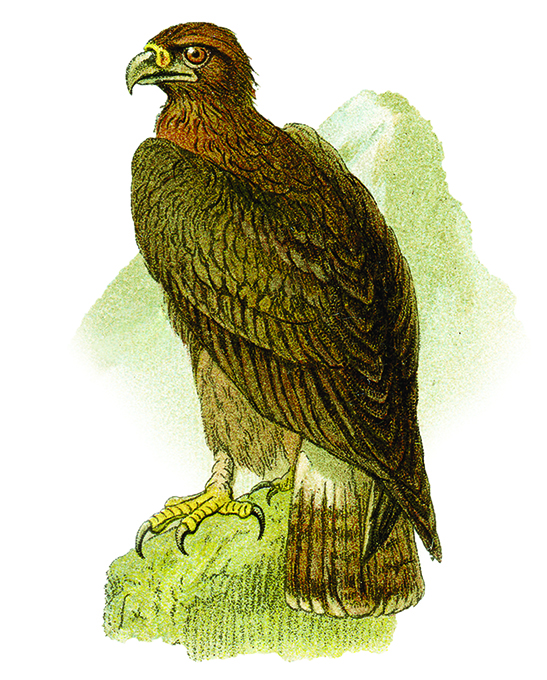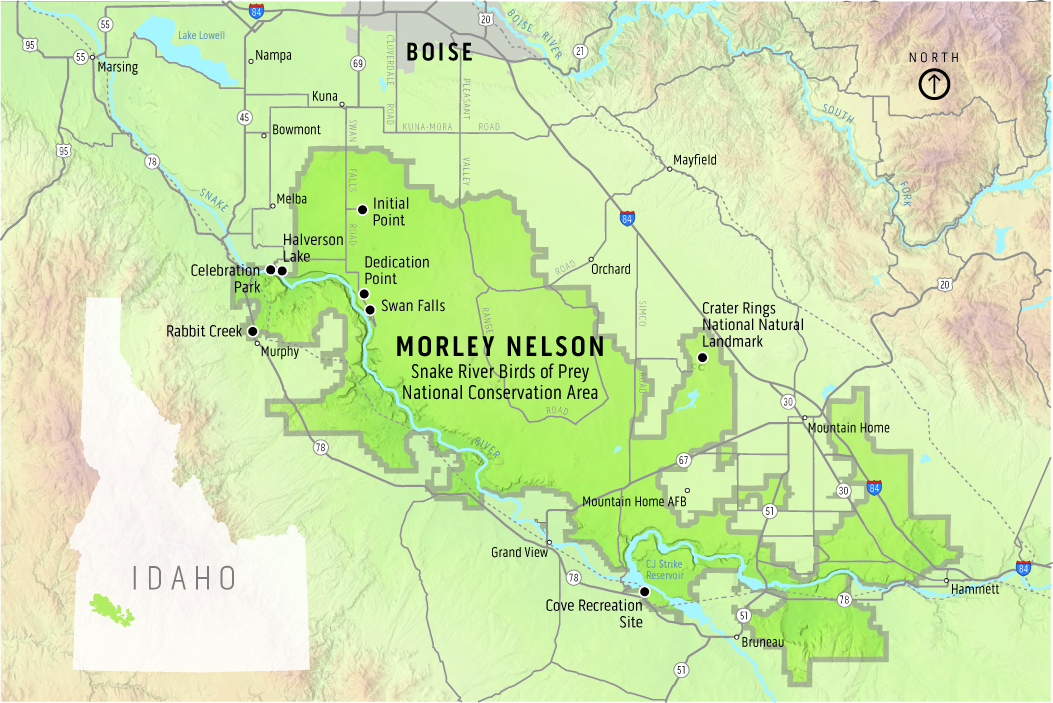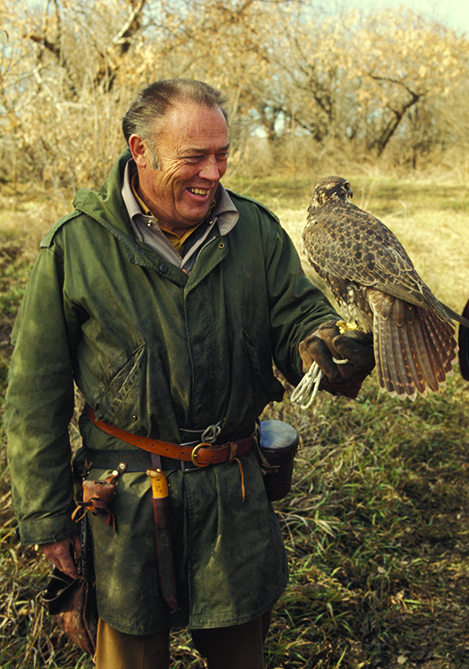Melon gravel, the heavy basalt boulders tossed along the Snake River like gigantic buckshot, is a wonder of the Gem State. Left over from the Bonneville flood 15,000 years ago, many of the massive rocks found on BLM land are 3 and 10 feet in diameter, some even etched with petroglyphs a century to 1,000 years old. They can be found via Canyon County’s Celebration Park south of Kuna. They are also are a bonus for birders searching the skies for golden eagles that took up roost after the flood carved out the Snake River Canyon. Eventually, the feature became prime cliffside habitat the birds have enjoyed for thousands of years.
The cause of the epic flood, a mountain of water gushing at an estimated 15 million cubic feet per second that tumbled melon gravel downstream was a massive ice dam burst at Lake Bonneville, the prehistoric water body left behind by the last ice age. It would absolutely swallow today’s Great Salt Lake with fresh water.
Walt Disney made golden eagles famous in movies made with the late raptor expert, World War II hero, and federal hydrologist Morley Nelson, a Boise foothills original, who was also a featured guest on Marlin Perkins’ “Wild Kingdom.”
Today, at 480,000 acres of protected land, the Morley Nelson Snake River Birds of Prey National Conservation Area, known locally as the “NCA” or Snake River Birds of Prey, is popular for spring bird watching. It is also host to hiking, camping, shooting, fishing, boating and windscreen tours. But Nelson’s passion, birds of prey, brought the NCA an international following in the raptor world. The canyon wall habit got its first conservation designation in the 1970s, but the vast area that many access via Swan Falls Road out of Kuna (recently paved) received its current designation in 1993.
“Without Morley Nelson it wouldn’t exist,” said Marc Bechard, director of the Raptor Research Center at Boise State University (BSU) where he’s been a professor and raptor researcher since 1983, the same year Nelson convinced The Peregrine Fund to move to Idaho.
Nelson bent the ear of his Boise neighbor, Cecil Andrus, when he was U.S. Secretary of the Interior. Bechard, who used to collect casualty birds from Nelson’s freezer as part of his raptor research, said Andrus—doing his part to protect the bird habitat—was famous for saying, “You can protect the bedroom, but if you want the eagles to survive, you’ve got to save the kitchen.”
“I was hired to establish a birds of prey program. The graduate program got going in 1987,” Bechard said, adding that BSU insists on accepting only as many students as funding can support. Some 100 graduates of the program have gone on to take federal jobs or earn PhDs and become faculty at other universities. “I don’t know exactly why, but there are a lot of young people from around the world who find raptors intriguing.”
Kathy Barker McCoy with the Golden Eagle Audubon Society leads regular birding hikes departing from Janjou Patisserie on State Street in Boise.
“It’s the Club Med for prairie falcons,” McCoy said referring to the NCA. “They come in the spring, lay their eggs, feed their babies on ground squirrels, then they all split.”
The sprint for the birds to reach adult size is a huge draw for birders from around the world. BLM estimates that the NCA accommodates 77,000 user days in a given year. In the spring, falcon parents race after scores of squirrel babies to feed and fledge their own who reach adult size in a month or so.
The NCA—located, as the bird flies, south of Boise and Mountain Home along the northwest flowing Snake River—is a massive swath of desert loneliness that is also home to bombing ranges for the Idaho Army National Guard. Called the Orchard Training Area, there’s hardly a tree in site. In addition to live-round rifle and small arms firing, there are 16 designated practice ranges for field artillery and mortar units, tank and helicopter gunnery and grenade launching. The “central impact area” is approximately 65,300 acres inside the NCA, sizable enough for maximum range training, day and night.
The military reserve is actually a benefit for raptor habitat. It is a safe zone for Paiute ground squirrels, still numerous and favored by itinerant prairie falcons. Warning signs for possible “unexploded ordnance” serve as a deterrent to most human explorers, including ground squirrel “plinkers,” responsible for heavy ground squirrel casualties (legal and planned). Shooting is a sanctioned activity on much BLM land.
The local ground squirrel species estivate (from the Latin for spring time), the summer version of hibernate, a survival adaptation in a desolate landscape that becomes as hot as Hades in the summer. So, springtime in the NCA is for prairie falcons feeding their young a race against time. The “kitchen” has been saved, but the food is only out for so long.
What’s more, the baby birds must learn to fly before they join a massive circular migration. Once their wings will carry them, the birds leave their birthplace in Idaho to hunt ground squirrels in distant lands: Saskatchewan in the summer and Texas in the winter. And every spring they return to what some would call a patch of Idaho desert, but others, like Morley Nelson, envisioned as home for these majestic birds.

The golden eagle (Aquila chrysaetos) is one of the fastest moving animals on earth. In a full stoop while hunting, a golden eagle can reach speeds up to 200mph.
Fire in the Kitchen
Golden eagle native vegetation in the NCA and black-tailed jackrabbits, its favored prey, is disappearing. Expansion of the conservation area happened as rangeland fires increased. As a result, breeding pairs in the Snake River Canyon area have dwindled, albeit slowly, from 35 pairs in 1971 when the Snake River Birds of Prey Natural Area became the first federal land management designation in the area, designed to protect the birds.

In the 1980s fires consumed vast swaths of sagebrush shrubs, more than 40,000 hectares of prime jackrabbit habitat, which adversely affected nesting golden eagle populations. Today, cheatgrass-fueled fires have burned up about 75 percent of the NCA. The influx of cheatgrass, which dries up and adds great tinder by summer, is additionally problematic because it is easily ignited even by hot engines and BLM has found no reasonable way to curb the plant. According to a national fire occurrence data set published by the U.S. Forest Service, most fires are man-made, about one percent are caused by lightning strikes. Today there are about 25 pairs of goldens and the food source has largely shifted. There is perfect habitat in the canyon with flat land above with thousands upon thousands of Paiute ground squirrels. Although ground squirrels are a food source for all kinds of raptors, especially prairie falcons, with the loss of jackrabbits, goldens have had to adapt to survive. Sagebrush restoration, protecting the kitchen, is a constant task for the U.S. Bureau of Land Management with no apparent solution in sight.

Morley Nelson, know as the most influential naturalist on raptor conservation in the American West.

